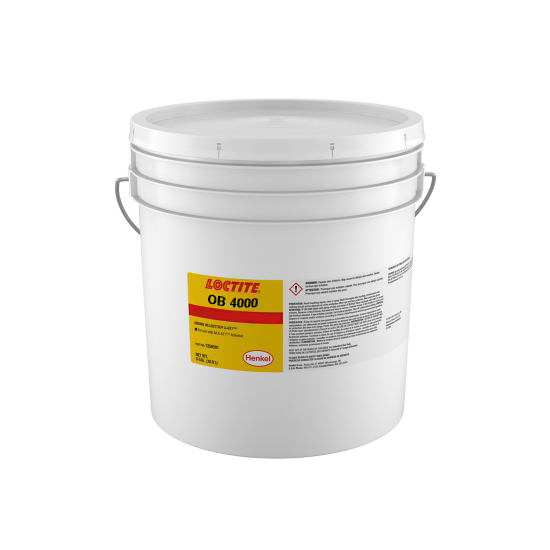LOCTITE STYCAST OB4000
Harmonization Code : 3907.30.00.90 | Polyacetals, other polyethers and epoxide resins, in primary forms; polycarbonates, alkyd resins, polyallyl esters and other polyesters, in primary forms : Epoxide resins : Other
Main features
- LED Encapsulation
- Moisture resistant
- Excellent thermal shock properties
Product Description
LOCTITE® STYCAST OB 4000 is Part B of LOCTITE® STYCAST OS4000, a fast curing, water-white epoxy casting compound designed for the encapsulation of LED lamps and displays. The mixed compound will gel rapidly at temperatures above 120°C; following a short post cure of 2 hours @ 125°C it will develop high strength, moisture resistant castings with excellent thermal shock properties.
LOCTITE® STYCAST OS4000 can be colored and diffused by the addition of specific dye concentrates, AC7113 red, AC7044 green and AC7088 diffusant concentrate
Mix Ratio, parts by weight* 100/100
Technical Specifications
| General Properties | |||||
| Mix Ratio Mix Ratio The amount of a constituent divided by the total amount of all other constituents in a mixture | 1:1 | ||||
| Pot Life Pot Life Pot life is the amount of time it takes for the viscosity of a material to double (or quadruple for lower viscosity materials) in room temperature after a material is mixed. It is closely related to work life but it is not application dependent, less precise and more of a general indication of how fast a system is going to cure. | 4 hours | ||||
| Specific Gravity Specific Gravity Specific gravity (SG) is the ratio of the density of a substance to the density of a reference substance; equivalently, it is the ratio of the mass of a substance to the mass of a reference substance for the same given volume. For liquids, the reference substance is almost always water (1), while for gases, it is air (1.18) at room temperature. Specific gravity is unitless. | 1.22 | ||||
| |||||
| Physical Properties | |||||
| Viscosity Viscosity Viscosity is a measurement of a fluid’s resistance to flow. Viscosity is commonly measured in centiPoise (cP). One cP is defined as the viscosity of water and all other viscosities are derived from this base. MPa is another common unit with a 1:1 conversion to cP. A product like honey would have a much higher viscosity -around 10,000 cPs- compared to water. As a result, honey would flow much slower out of a tipped glass than water would. The viscosity of a material can be decreased with an increase in temperature in order to better suit an application | 200 mPa.s | ||||
| Electrical Properties | |||||
| |||||
| Mechanical Properties | |||||
| |||||
| |||||
| Thermal Properties | |||||
| |||||
| Glass Transition Temperature (Tg) Glass Transition Temperature (Tg) The glass transition temperature for organic adhesives is a temperature region where the polymers change from glassy and brittle to soft and rubbery. Increasing the temperature further continues the softening process as the viscosity drops too. Temperatures between the glass transition temperature and below the decomposition point of the adhesive are the best region for bonding. The glass-transition temperature Tg of a material characterizes the range of temperatures over which this glass transition occurs. | 110 °C | ||||



